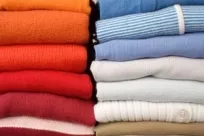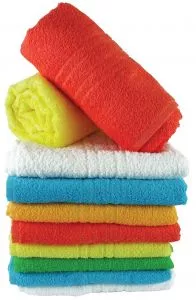Natural Laundry Detergent Basics
How safe is your laundry detergent?
Are your clothes really clean?
Make the switch to natural laundry detergents! Do naphthalene, phenol, sodium nitilotriacetate, chloroform and phosphates sound like natural laundry detergents? You may not know that you have a chemistry lab in your laundry room! These chemicals all lurk in the most popular detergents and fabric softeners on the market, and most of them never rinse out of your clothes, sheets and towels! Check your product labels, and if you can't pronounce these chemical names, you probably shouldn't be washing your clothes in them!
Possible Health and Environmental Issues
Fact: the chemicals found in laundry products can be absorbed through the skin and cause a host of health problems such as allergies, headaches, nausea, shortness of breath, contact dermatitis, or cold-like symptoms.There is also significant environmental harm caused by using these chemicals, because they enter the groundwater and harm fish and wildlife. The only way to eliminate the damage and exposure is to switch to a natural laundry detergent. Look for vegetable-based biodegradable products that are free of both fragrances and chlorine bleach. There are many very effective natural detergents available, such as Toni Natural, Seventh Generation and Ecover. They are available in health food stores and online.
There are also several recipes found on the internet for making your own laundry detergent, but they require ingredients that may be difficult to find. Here’s one to try!
Basic Laundry Soap - 2 cups grated soap (choose a vegetable-based, natural, fragrance free bar and grate in a food processor)
- 1 cup washing soda (non-toxic and similar to baking soda, found in the laundry section of the supermarket)
- 1 cup borax
Mix well, label and store in an airtight plastic tub. Use approximately 2 tablespoons per wash load. Add vinegar to the final rinse to soften and remove soap residue.
Don't use dryer sheets!
The list of chemicals contained in your dryer sheets includes camphor, chloroform and ethyl acetate. You may be surprised to find out, however, that these chemicals are all on the EPA’s Hazardous Waste list. With repeated use over time, we absorb these chemicals into our bodies. So why do we want to coat our clothing, sheets and towels in chemicals? Manufacturers of cleaning products have convinced us that we need softness and strong fragrance as proof of cleanliness.
Green Laundry Basics
- Add 1/2 cup baking soda at the start of your wash cycle to boost your detergent’s effectiveness. This helps reduce the amount of detergent you need for each wash load, and brightens whites and colors very well.
- Use 1/2 cup vinegar in the final rinse in place of fabric softener. Vinegar also removes soap residue from your laundry. The vinegar smell will not linger after the clothing has dried. (Never mix vinegar with bleach as the combination creates dangerous fumes!)
Dryer BallsThere is a new product available called “Dryer Balls,” which are spiky balls that are used in your dryer to fluff and separate the clothes as they tumble, and help eliminate the need for dryer sheets. They contain no chemicals or fragrances, and are supposed to help cut down on drying time. They cost around $10 for two, and are available in most major stores and online.
The Usual Precautions - Always keep laundry products out of the reach of children and pets, including your own natural laundry detergents.
- Label and store these mixtures as carefully as you would any other cleaning products. Although they are made from safe ingredients, they should be treated with caution.
- Use this natural laundry detergent recipe with caution for the first time on delicate fabrics.
- Never mix vinegar with bleach as the combination creates dangerous fumes!
|
Another reason to give up dryer sheets! You can help extend the life of your clothes dryer by washing the lint filter.
No more dryer sheets!
The majority of your laundry can be done effectively in cold water to conserve energy; however, if you have allergies, this article recommends washing sheets and bedding in hot water to help eliminate allergens. (FYI: 30 to 40 degrees Celsius is 86 to 104 degrees Fahrenheit. 60 degrees Celsius is 140 degrees Fahrenheit.)
Wash sheets and bedding at higher temperatures if you have allergies.
Visit our Essential Oil page to find out how to
boost your cleaning formulas!
Return from Natural Laundry Detergents/Laundry Basics to Back-to-Basics Home







